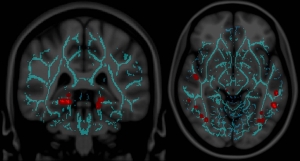
Saeed Fakhran
The imaging of mild traumatic brain injury (MTBI), commonly referred to as concussion, is a maturing and expanding field, with novel imaging methods being used for both clinical evaluation of patients as well as in research. While initial concussion imaging was focused on excluding more serious pathology (eg, hemorrhage) in these patients, the field has long since moved beyond this rather simple start. Subsequent work has focused on evaluation of abnormalities on DTI, which serve as markers of microstructural changes implicated in diffuse axonal injury. This evaluation has focused predominantly on detecting these DTI white matter changes in patients with MTBI compared with controls, with multiple studies demonstrating widespread abnormalities.
The challenge, thus far, has lain in making sense of these abnormalities and attempting to correlate them with either meaningful patient deficits or patient outcome. Traditionally, clinicians and radiologists have viewed concussion through a holistic lens, and thus have attempted to correlate—with largely frustrating results—patient outcome with cognitive metrics such as the Mini-Mental State Examination (MMSE).
At the University of Pittsburgh we are advancing a more nuanced approach to MTBI. Setting aside the traditional holistic approach to concussion, we instead attempt to classify concussion patients based on one of six dominant symptom clusters—anxiety, cervicalgia, sleep-wake disturbance, vestibulopathy, migraines, and ocular dysfunction—and subsequently attempt to correlate abnormalities in these subgroups
